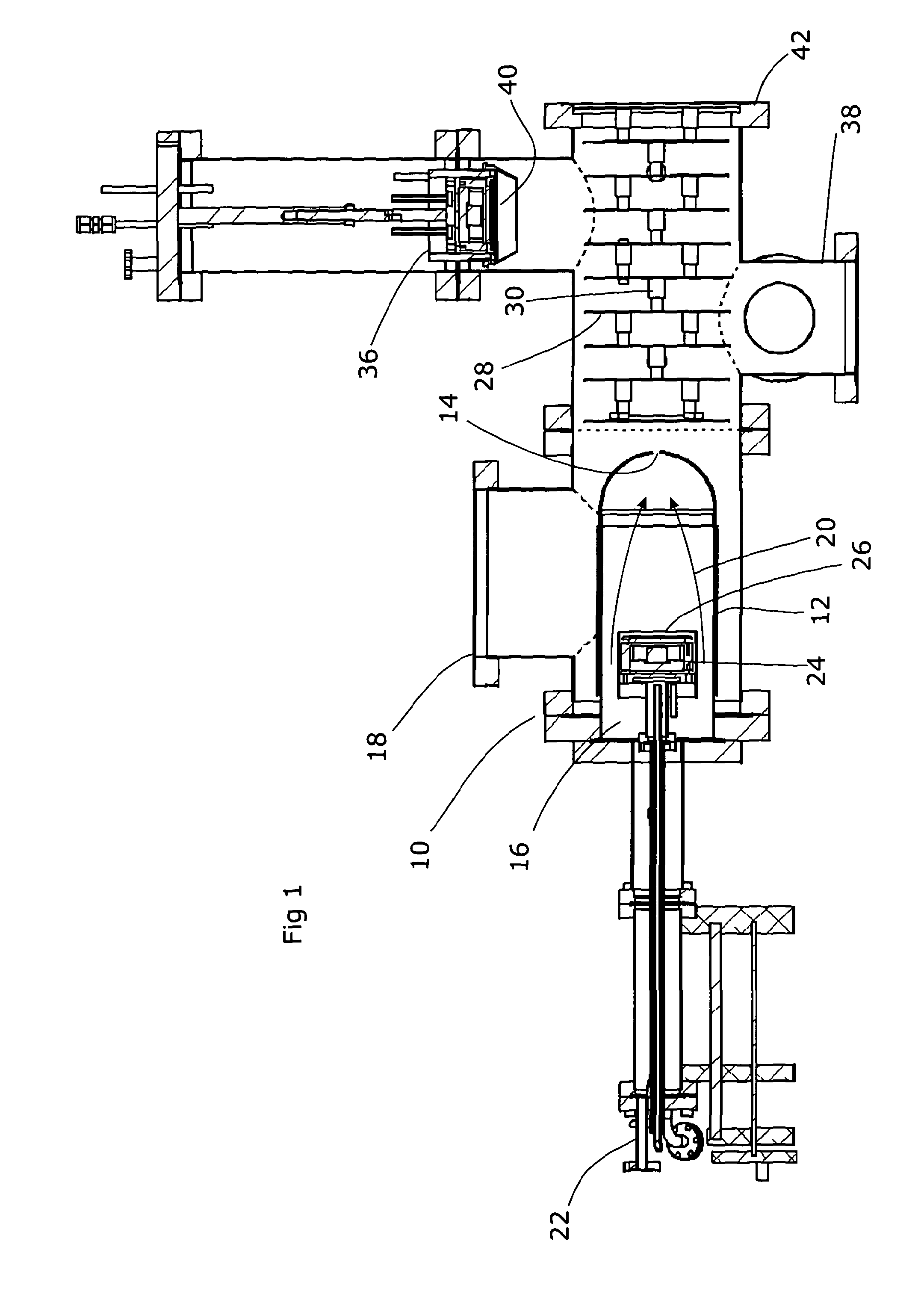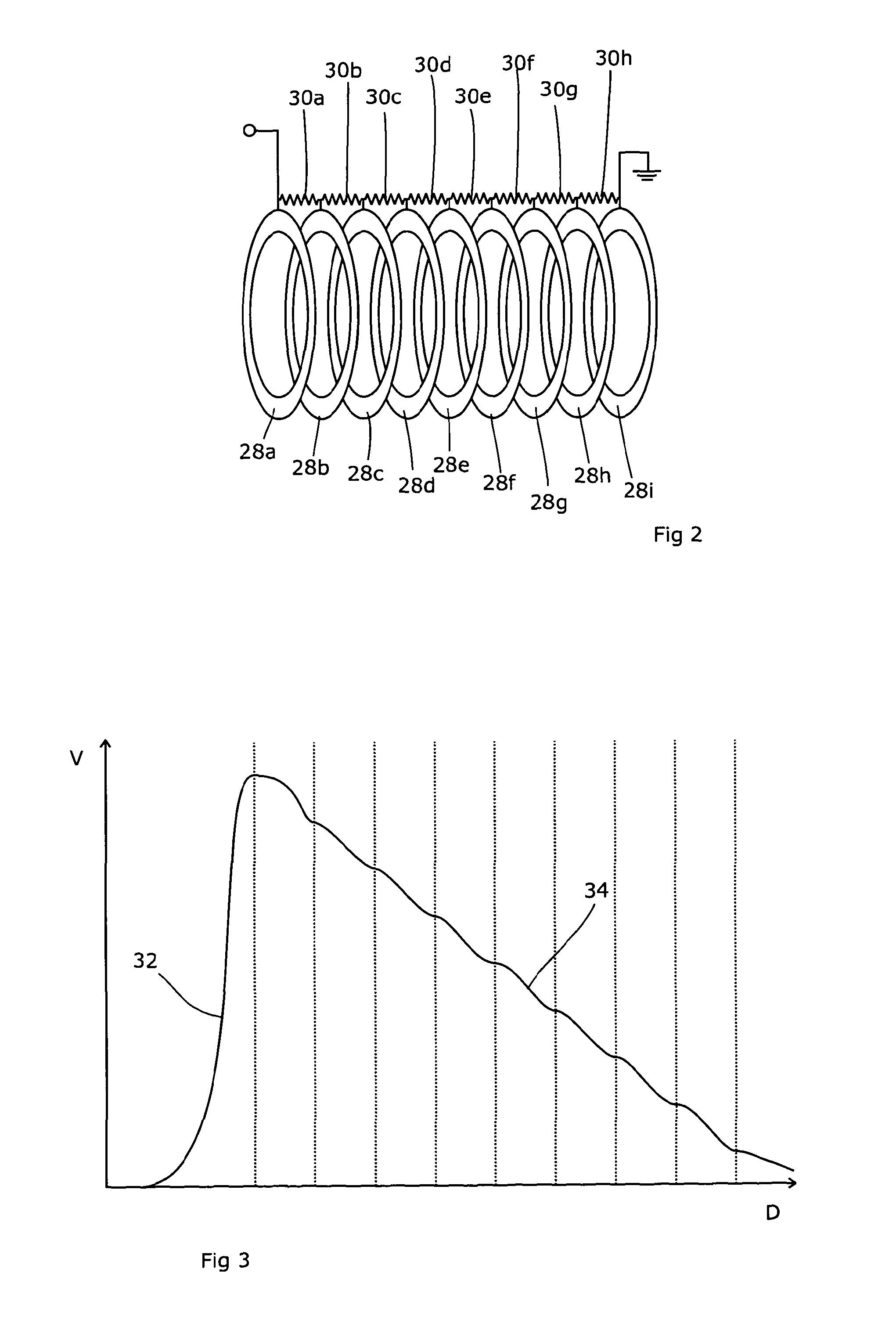Production of Nanoparticles
a technology of nanoparticles and nanoparticles, which is applied in the direction of electrodes, diaphragms, ion implantation coatings, etc., can solve the problems of difficult and difficult production of such particles, and achieve the effect of increasing the size and the time in the region
- Summary
- Abstract
- Description
- Claims
- Application Information
AI Technical Summary
Benefits of technology
Problems solved by technology
Method used
Image
Examples
Embodiment Construction
[0014]Referring to FIG. 1, an apparatus for the production of composite nanoparticles is disclosed. This consists of, on the left hand side as illustrated in FIG. 1, an apparatus 10 for producing nanoparticles. These nanoparticles will eventually form the core of the resulting composites of nanoparticles. An enclosure 12 has an outlet 14 at its right-most end and contains a gas 16 at a low pressure. This is enclosed within a vacuum chamber 18, and accordingly the low pressure gas 16 is at an elevated pressure relative to the surrounding space. As a result, the low pressure gas 16 will escape via the outlet 14, forming a flow of gas as illustrated by arrows 20. A gas inlet 22 is accordingly provided at the left-most end of the enclosure 12, in order to maintain and replenish the supply of low pressure gas 16.
[0015]A sputter deposition apparatus 24 is provided within the enclosure 12, and is generally conventional in nature. A sputter target 26 is provided, of the material intended fo...
PUM
| Property | Measurement | Unit |
|---|---|---|
| size | aaaaa | aaaaa |
| electrically resistive | aaaaa | aaaaa |
| voltage | aaaaa | aaaaa |
Abstract
Description
Claims
Application Information
 Login to View More
Login to View More - R&D
- Intellectual Property
- Life Sciences
- Materials
- Tech Scout
- Unparalleled Data Quality
- Higher Quality Content
- 60% Fewer Hallucinations
Browse by: Latest US Patents, China's latest patents, Technical Efficacy Thesaurus, Application Domain, Technology Topic, Popular Technical Reports.
© 2025 PatSnap. All rights reserved.Legal|Privacy policy|Modern Slavery Act Transparency Statement|Sitemap|About US| Contact US: help@patsnap.com



